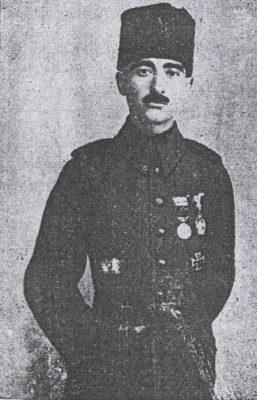The Western Armenian mountainous, forested district Sparkert (Western Armenian: Spargerd) is situated in the lower reaches of the Moks River. There are few arable lands. Historically it corresponds to the district of Iskayir in the Mokk province. Sparkert was first mentioned in the 14th century.
At the end of the 19th century the nahiye Sparkert had 29-30 villages. The main villages were Bast and Mets Hurak. Among the large villages of Sparkert were Kotents, Jazhvan and Tvaghus.
Toponym
According to Armenian legend, the apostle Bartholomew (Arm.: Բարդուղեմեոս առաքյալը) brought the image of the Holy Mother of God here, due to which the area was called Սուրբ Պատկեր (Surb Patker – ‘holy image; icon’). According to another legend, Jesus Christ arrived here and sent his image to a nearby area. That’s why the area was called Surb Patker, and then Sparkert.
In fact, the place name derives from the ancient administrative unit Hyspiritis (Grk.: ‘Ispir / Hyspir country’), which is documented in 17 A.D. The ancient name of the region is common with Ispir in the north of Erzurum and indicates the name of a tribe. In 1665 Spargerd / Sparkert is documented as the name of a prefecture, in 1876 as Spayert.
While İspayert / Uçum sub-district center was here, it was later moved to the town of Sağınlı / Simos. Today, the previous administrative center of Sparkert is the village Sürücüler (Trk. ‘drivers’).[1]
History
In 1555, under the Treaty of Amasia, Sparkert passed to the Ottoman Empire and was incorporated into the Van Vilayet until the middle of the 19th century. In the 1880s it joined the kaza of Hizan in the Bitlis province as a nahiye. It was one of the dioceses of Akhtamar Catholicate.
Population
Sparkert was one of the most Armenian-populated areas in Western Armenia. Although Kurds settled there in the 13th and 14th centuries, Armenians formed the overwhelming majority of the population. At the end of the 19th century, the nahiye of Sparkert had a population of 4,000, the vast majority of whom were Armenians. Raymond Kévorkian mentions 26 villages with “an approximately total Armenian population of 2,600” in the Sparkert nahiye in 1915.[2]
The inhabitants were mainly engaged in cattle-breeding, horticulture, and partly in gardening.
Among the famous monasteries in the nahiye of Sparkert were the monasteries of Bazenits (Bazmenits), Surb Astvatsatsin (Holy Mother of God), Geghis, Surb Kirakos, Surb Gevorg of Shirin (Surb Skavarak), Sorva, Surb Astvatsatsin (Holy Mother of God; Nzar).
Destruction
In 1877/8, Sheikh Jalaleddin, and in 1895 Hamidiye units committed massacres in Sparkert, which killed many Armenians, forcing some survivors to emigrate. During the 1915 genocide, most of the Armenian population was massacred. A small number of survivors took refuge in Eastern Armenia.
“There is every reason to believe that the fate of the Armenians of the other nahies [of the kaza Hizan] was similar to that of the inhabitants of Spargerd.
(…) conscription was a painful process in this district, because many men of draftable age were working far from home or even abroad, as was common in the rural areas of Armenia. The conscripts were sent to Van and from there to the Caucasian front. None came back alive. (…) As happened elsewhere, the authorities in the nahie organized a second conscription campaign late in March [1915]; its purpose was to enlist men over 45 years of age, who were supposed to serve in the military labor battalions. (…) Around 20 May, the region found itself under threat from ‘Kurds and Turks fleeing from Van’. However, the Armenian fedayis checked the offensive by maintaining control over a pass in the southern part of the nahie, the sole means of access to it. (…)

The Russian forces effectively controlled the region for almost two months, between May and late June. In July, the Russian general staff ordered the evacuation of all the inhabitants of Spargerd and Khizan. It is likely that the return of Halil’s and Cevded’s unified forces alarmed the Russian commanders, who preferred to evacuate these villages to save them from certain death. After waiting for three weeks in Vostan, on the shores of Lake Van, the Armenians of Khizan set out on their exodus, bound for the Caucasus. Like the refugees from Van, they fell victim to massacres in the Perkri pass. Over the following weeks, many others were mowed down by epidemics in Echmiadzin, where they had found refuge.”
Excerpted from: Kévorkian, Raymond: The Armenian Genocide: A complete history. London, New York: I.B. Tauris, 2011, p. 344